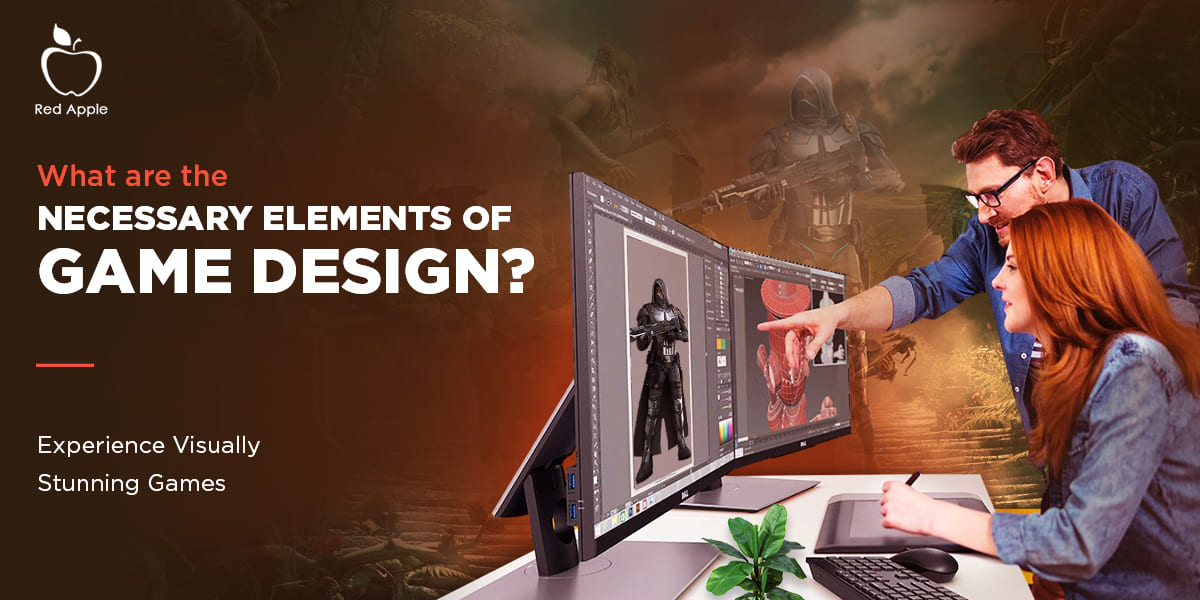
Features of Creating Game Design
In the realm of digital entertainment, video games stand as a dynamic fusion of art and technology. Behind every visually stunning and immersive gaming experience lies a meticulously crafted design that governs the game’s mechanics, visuals, and overall user experience. Designing for games involves a delicate balance between aesthetics and functionality, where the interplay of creativity and technicality gives birth to captivating virtual worlds. This article delves into the key features of creating game design, exploring how designers weave together various elements to shape unforgettable gaming experiences.
- Conceptualization and Ideation: Game design begins with a concept, a kernel of an idea that will ultimately evolve into a fully-fledged game. This stage involves brainstorming, research, and drawing inspiration from various sources, including literature, movies, history, and even everyday life. Designers must consider the genre, target audience, and core gameplay mechanics during this phase. A unique and engaging concept serves as the foundation upon which the entire design is built.
- Gameplay Mechanics: At the heart of any game design are the gameplay mechanics – the rules, interactions, and systems that define how players interact with the virtual world. Mechanics should be intuitive and balanced, providing a challenge that remains enjoyable without becoming frustrating. Whether it’s a platformer, role-playing game, or strategy game, the mechanics should align with the game’s overall concept and objectives.
- Storytelling and Narrative: Many modern games incorporate intricate narratives that immerse players in richly developed worlds. The narrative design involves crafting compelling characters, intriguing plotlines, and immersive lore. Seamless integration of storytelling elements with gameplay can enhance the emotional engagement and investment of players in the game’s world.
- Visual Aesthetics: The visual aspect of game design is what initially captures players’ attention. From character design and environment aesthetics to user interface elements, visual coherence and creativity are crucial. Designers work on creating a visual style that complements the game’s genre and narrative while maintaining technical feasibility.
- User Interface (UI) and User Experience (UX): A well-designed user interface ensures that players can easily navigate the game’s mechanics and options. Intuitive controls, clear menus, and responsive feedback contribute to a positive user experience. UX design considers player emotions and interactions, aiming to create a seamless and enjoyable journey through the game.
- Level Design: Level design involves crafting the physical spaces where players interact. Whether it’s an open-world environment or linear levels, designers must balance aesthetics, gameplay flow, and challenge. Well-designed levels guide players through the game, revealing new mechanics and narrative elements while keeping them engaged.
- Balancing: Game design is a delicate balancing act. Balancing involves tweaking various aspects of the game to ensure fairness and challenge. This includes adjusting difficulty levels, resource distribution, character abilities, and more. A well-balanced game prevents monotony and frustration, encouraging players to keep exploring and mastering the mechanics.
- Iteration and Testing: Game design is rarely perfect in its first iteration. Continuous testing and iteration are essential to identify and rectify issues. Playtesting involves getting real players to experience the game and provide feedback. This iterative process helps refine mechanics, visuals, and overall gameplay, ensuring a polished final product.
- Sound and Music: Sound effects and music contribute significantly to the overall atmosphere and immersion of a game. From subtle ambient sounds to epic musical scores, audio design adds depth to the player’s experience. Matching soundscapes with visual aesthetics enhances the emotional impact of key moments in the game.
- Accessibility: Inclusive game design considers diverse audiences, including players with disabilities. Implementing features like customizable controls, subtitles, and colorblind modes ensures that the game can be enjoyed by a wider range of players.
In conclusion, the creation of game design is a multifaceted endeavor that blends creativity, technical skill, and a deep understanding of player psychology. A successful game design harmoniously combines gameplay mechanics, storytelling, aesthetics, and technical functionality. The resulting experience resonates with players on both emotional and interactive levels, transporting them into immersive virtual worlds. As technology continues to advance, game design will evolve, promising even more captivating and innovative gaming experiences in the future.







